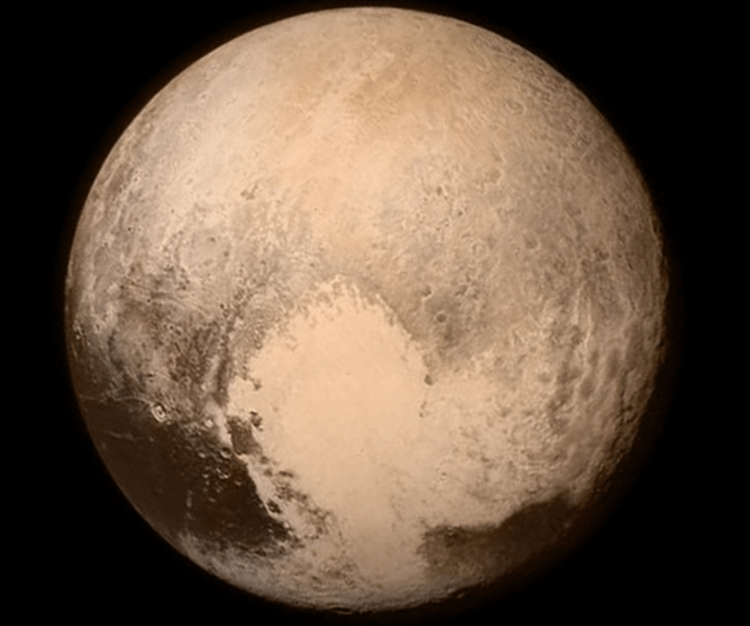Want smarter insights in your inbox? Sign up for our weekly newsletters to get only what matters to enterprise AI, data, and security leaders. Subscribe Now
NASA’s New Horizons spacecraft has completed its flyby of Pluto, shooting past the celestial body at around 28,000 mph at 4:49 a.m. PDT.
This first high-res photo was beamed back as the spacecraft approached its closest position to Pluto, captured at around 1 p.m. PDT on July 13, or 16 hours before the flyby. New Horizons was 476,000 miles from the surface at the time this photo was taken, but it got as close as 7,500 miles, so we can expect more detailed images to emerge.
Interestingly, Instagram was used to publish this first surface photo of Pluto — a sign of the times, perhaps.
Today’s milestone moment has been a long time coming.
First, there were nine planets, and then Pluto wasn’t one of them — and all we thought we knew about the solar system went down the drain. One reason for Pluto’s demotion is that it is just too small to be called a planet. However, we didn’t even know how big poor Pluto was, until now.
To be fair, Pluto is so far away that it has taken spacecraft New Horizons over nine-and-a-half years to get this close to the planet and its brighter moon Charon, as the National Aeronautics and Space Administration — better known as NASA — said it would “bring humankind its first exploration of the Pluto system.”
“The first images of the night region of Pluto [were obtained], using only the light from Charon, itself softly illuminated by a Sun 1,000 times dimmer than it is at Earth,” the agency said. “The images … provide[d] New Horizons’ only view of Pluto’s lesser-known south polar region, currently in the midst of a numbingly long winter.”
This region includes what the agency called “Pluto’s Bright, Mysterious ‘Heart,'” which was the “target of the highest-resolution images” taken by the spacecraft. As New Horizons approached Pluto yesterday, the planet’s rotation allowed it to get this image of the white, heart-shaped mark. The “mysterious bulls-eye” region seen in earlier images rotated out of sight by the time of the spacecraft’s closest flyby, however.
Other mysteries of the former planet have been solved too. NASA announced yesterday that it’s “larger than many prior estimates.” Pluto is 1,473 miles in diameter.
NASA said, “Pluto is larger than all other known solar system objects beyond the orbit of Neptune,” clearing up ongoing debate about its size, which started when the celestial body was discovered in 1930.


